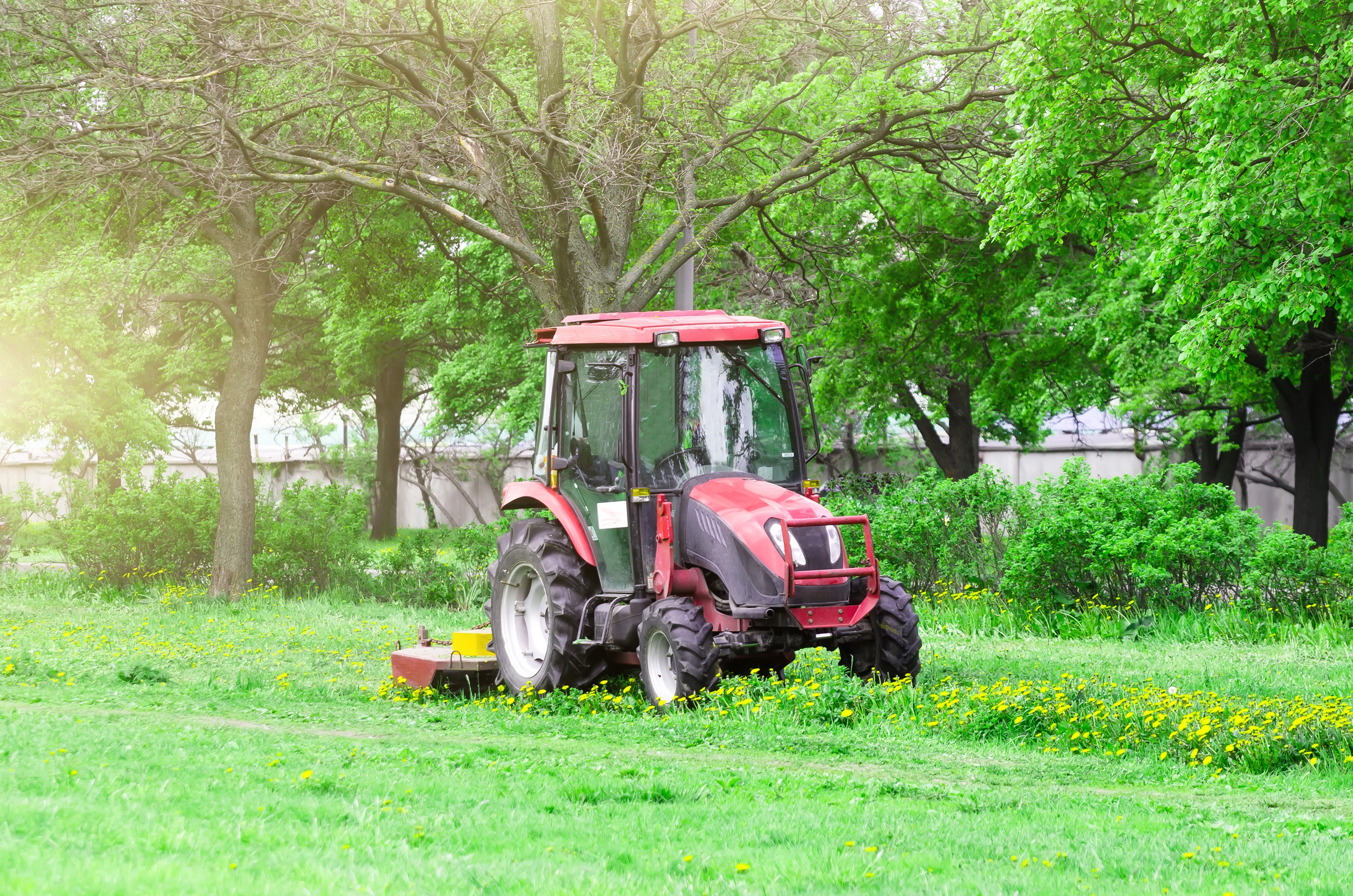
“Mowing” is a term used to describe the cutting or trimming of grass. The mowing process cuts grass to a uniform height in a pasture or lawn. Do pastures, paddocks or fields used to graze horses require mowing? Is there a potential benefit of mowing? At what height do you mow pasture grass? Are there any risks associated with grazing horses on freshly mowed pasture? Those questions and others will be answered in this article.
Benefits of Mowing
The main goal in pasture management is to maintain or to enhance grass quality. The intake of pasture grass can be a significant source of nutrition for the grazing horse if the pasture is properly managed. Mowing is one tool that can be used to better manage pasture.
Some horse owners mistakenly feel that mowing pastures is simply done to make the pastures look nice. However, there are several valid reasons to consider for mowing pastures. Some potential benefits of mowing include: weed management, enhancing forage quality and reducing grazing patterns.
Mowing pastures is a great means of controlling weeds. Repeated mowing of pasture decreases the competitive ability of a weed to survive in a grass paddock. Keeping weeds the same height of grass will give grass an advantage and prevent weeds from shading and restricting grass growth. Mowing also serves to prevent weeds from establishing seed heads.
Eliminating seed heads prevents weeds from reproducing and spreading in the pasture. The control of weeds in a pasture does not occur with a single mowing, but instead is facilitated with multiple mowings.
Mowing pastures enhances pasture quality. A grass plant that is actively growing is constantly producing nutrients that horses can utilize. The mowing process keeps grass plants in a vegetative or growing state. Mowing prevents the plants from reaching a reproductive state when they develop a seed head and ultimately cease growing. Mowing also keeps plants at a shortened height which increases digestibility and palatability. As grass plants grow tall they become fibrous and less digestible.
When mowing grass pastures, it is important not to cut grass plants too short since cutting too short will reduce leaf area which is needed to stimulate growth. A grass plant that is cut too short is also prone to stress and might die. The optimum height for a cool-season grass is approximately four inches (10 cm), while the optimum height for a warm-season grass is approximately eight inches (20 cm).
Mowing pastures also reduces grazing patterns. Horses tend to graze in certain areas of a pasture and utilize other areas of the pastures to pass manure. The grazed areas are very short and known as “lawns.” The non-grazed areas consist of taller grass and they are known as “roughs.” This is a bit of golf course terminology, but it describes well the different areas of a horse pasture.
Mowing serves to shorten the taller grass and enhance its palatability. Over time this will help to eliminate the grazing patterns that can exist of horse pastures and provide better utilization of pasture.
Potential Risks for Horses Grazing Mowed Pasture
What are the risks, if any, for horses grazing mowed pasture?
The single biggest risk associated with mowed pasture is the horse consuming mowed grass that has molded. Once grass is mowed, the portion of grass that is clipped from the plant contains high moisture content. These clippings are prone to molding. If horses eat grass that has molded, it can cause a variety of symptoms including coughing and nasal discharge and in extreme instances can result in death due to mold toxins.
Another potential risk of clipped forage is choking. If horses take in large mouthfuls of short grass clippings they can potentially choke.
Both the risk for ingestion of mold and for choking can be virtually eliminated if the pasture is harrowed following mowing.
The harrowing process spreads the grass clippings evenly throughout the field and dramatically decreases the likely hood of any problems.
Supplement your horse’s summer diet of pasture with high quality forages from Standlee Premium Western Forage. Visit standleeforage.com/products to learn about a variety of product options including Alfalfa/Timothy pellets, Orchard pellets, Alfalfa cubes and many more.


